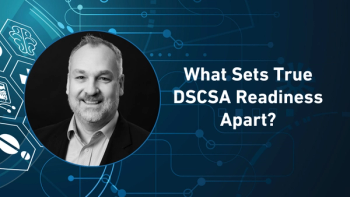
Being Digitally Optimized
In the second part of his Pharma Commerce video interview, Scott Tillman, Logility’s senior vice president of innovation, discusses the common misconceptions supply chain leaders might have around the term, and why the processes around optimization need to change.
In a video interview with Pharma Commerce, Scott Tillman, Logility’s senior vice president of innovation, addresses the gap between high interest in generative AI (GenAI) and its relatively low adoption in supply chain-specific applications, as highlighted in Logility’s Supply Chain Horizons 2025 Market Report. He identified several key reasons for this disconnect.
First, many companies experience “paralysis by analysis” due to the rapidly evolving technology landscape. With so many options and an unclear starting point, organizations often hesitate to act. Tillman emphasized the importance of adopting an agile, iterative approach—developing, deploying, learning, and refining continuously—rather than seeking a perfect solution from the outset.
Second, he pointed out a cultural shift that needs to happen within organizations. Companies must become more comfortable with experimentation in software implementation, viewing it as a learning process rather than a one-time deployment. This mindset change is essential for successfully leveraging emerging technologies like GenAI.
Financial and technical barriers also play a role. Expertise in GenAI is both scarce and costly, and training models can be time-consuming. Organizations face a strategic decision: whether to build their own AI models or depend on third-party software vendors. Tillman noted that this debate is still in its early stages, and its outcome will shape how companies integrate GenAI into their operations.
Finally, he stressed that in the supply chain space, companies will increasingly depend on vendors like Logility to provide specialized expertise and value-driven use cases. These could include demand sensing, forecasting insights, and other prescriptive applications of GenAI tailored to business needs. Overall, Tillman advocated for a practical, phased approach to GenAI adoption, focusing on clear, impactful use cases rather than waiting for the perfect solution.
He also comments on some common misconceptions supply chain leaders might have about what it means to be “digitally optimized;” the role of automation and GenAI evolving in workforce development; how geopolitical or economic volatility can potentially reshape the way organizations prioritize supply chain investments; and much more.
A transcript of his conversation with PC can be found below.
PC: The data shows a disconnect between perceived modernization and actual performance. What are some common misconceptions supply chain leaders might have about what it means to be “digitally optimized”?
Tillman: One of the primary misconceptions is that tools equal optimization. I read a study the other day that SAP implementations—or clients that implemented SAP—are frozen on the original version they implemented, even if they’ve been upgraded. Part of that is the change management they did around the implementation was focused at the time they did the implementation, and it's not a continuous improvement process around how do we continue to improve moving forward when we implement software or we upgrade software.
I think there's this inflated idea that tools equal optimization, when there are processes around optimization that need to change. If you're not focused on doing the change management or the process improvement around the tools that you're implementing or upgrading to, that leads to people and clients thinking they're digitally optimized when they're really not. The other part is that there's just this inflated expectation that there's this immediate return on investment you're going to get when you adopt or do a transformation project. It really is one of those aspects where you need to think about the context of the solution you're implementing, and how that solution is going to improve your overall business processes.
I think that supply chain leaders need to look at this as that it's a continuous improvement-type opportunity when you implement a software, and you need to make sure you have that mechanism in place to take advantage of continuous improvement opportunities that the software vendor is going to provide you.
Newsletter
Stay ahead in the life sciences industry with Pharmaceutical Commerce, the latest news, trends, and strategies in drug distribution, commercialization, and market access.





